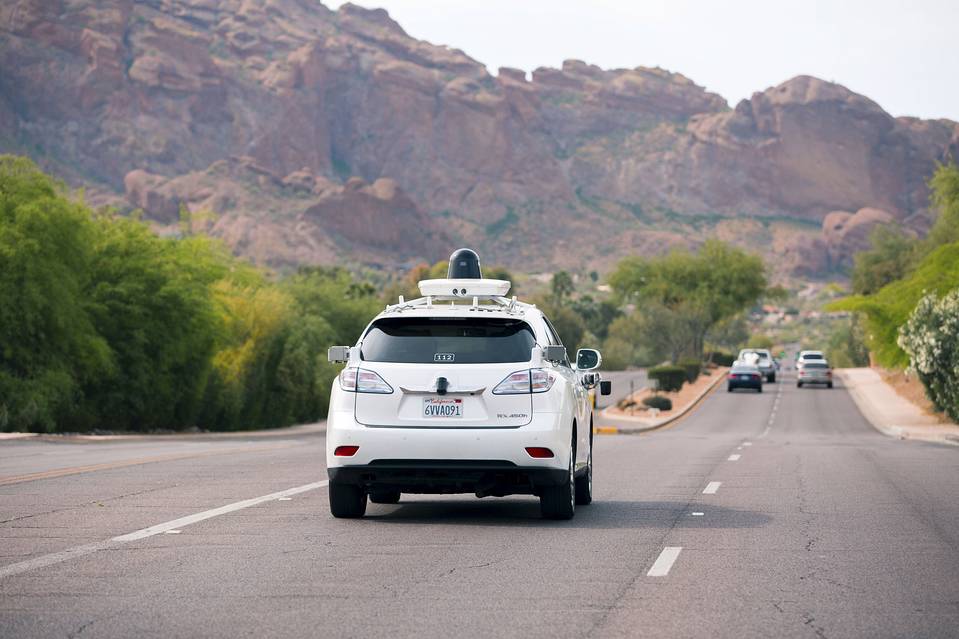In a surprise move on Friday, the governor of Michigan passed a set of laws allowing autonomous vehicles to operate on the state’s roadways.
According to a University of Michigan’s Transportation Research Institute project manager Brandon Schoettle:
“As far as I know, Michigan is the first state to make it official that these types of vehicles can be used on public roads. California is also planning to enact similar legislation soon. Obviously, the general act of vehicles driving around like this on any public roads is somewhat unprecedented anywhere, given the very recent introduction of such technology.”
Setting the ball rolling on the introduction of driverless vehicles on public roads, Gov. Rick Snyder signed a legislative package that brings four bills into law. The bills cover vehicles without a driver, obviously, but they also cover cars without a steering wheel as well as “platooning”, or deploying a convoy of autonomous vehicles.
Autonomous driving technology is still a relatively new technology, so this comes as somewhat of a surprise, to say the least.
Not that legislators haven’t been working overtime to get these regulatory guidelines into shape. The National Highway and Transportation Safety Administration (NHTSA) in September released early guidelines for highly automated vehicles (HAVs) to operate on public roads, and this includes performance guidance for HAVs.
The purpose of these is to provide manufacturers in this space to have a framework that makes it easier to develop their automated fleets without worrying about specific laws in specific states, among other things.
It is great to know that Michigan has taken the lead in this initiative, but a big question haunts us at this point. Are we ready for fully autonomous vehicles?
On the one side, there are specific applications of this technology that have worked well. For example, autonomous vehicles have performed exceedingly well in cases where “boundaries” have clearly been set for their operation. And it’s not just in the United States.
You may have seen our report on how Nissan has been successfully using autonomous LEAFs (electric vehicle – EV) to move cars around in their factory in Japan. We also reported that BMW intends to run a fleet of 40 self-driving cars in Munich’s inner city by next year as part of a car-hailing service. Back in the States, Pittsburgh was one of the first cities to see self-driving cars from Uber and several manufacturers are in various stages of testing autonomous technology.
Tesla, in fact, already has autopilot capabilities that are regularly being used by buyers of its EVs.
But, again, are we ready for a full-scale deployment? That’s a major consideration, and there’s more than one reason to believe that we might not be.
The first and foremost of these reasons is safety with the current level of development that this technology has been able to achieve. No car maker today – not even Tesla – will tell you that it is safe to put your car on autopilot on any road you want. That’s because the capability of this tech is still very limited.
The second reason is the cost factor involved. Autonomous technology hasn’t been brought to mass production yet, so it will add a significant premium to the price of an automobile. Those costs will eventually come down, there’s no doubt about that. But as of now, it’s not clear whether the general car-buying populace would be willing to pay that premium on technology that is still largely untested under strenuous driving and road conditions.
Michigan wants to be seen as a leader in this movement, and that much is obvious from their statements when the legislation was passed:
“Michigan put the world on wheels and now we are leading the way in transforming the auto industry,” Snyder said. “We are becoming the mobility industry, shaped around technology that makes us more aware and safer as we’re driving. By recognizing that and aligning our state’s policies as new technology is developed, we will continue as the leader the rest of the world sees as its biggest competition.”
It is certainly admirable that the state wants to maintain its reputation for being a pioneer in the automobile industry, Detroit having been home to the original Ford Model-T. By passing this piece of legislation, it might seem that they’re jumping the gun, but the race is actually well underway. Michigan is merely setting the precedence of getting ready to embrace autonomous technology.
The safety, cost and other aspects may take time to catch up with the Wolverine State, but car makers now have a fully legal deployment point for their compliant self-driving vehicles. If California, indeed, follows suit, it will inevitably spark off a race of a different kind – one of “readiness for automotive autonomy.”
We should see some interesting developments from car manufacturers following this landmark law for autonomous vehicles, so stay tuned as we bring you the latest news from the world of driverless technology.
Thanks for reading our work! Please bookmark 1redDrop.com to keep tabs on the hottest, most happening tech and business news from around the world. On Apple News, please favorite the 1redDrop channel to get us in your news feed.



